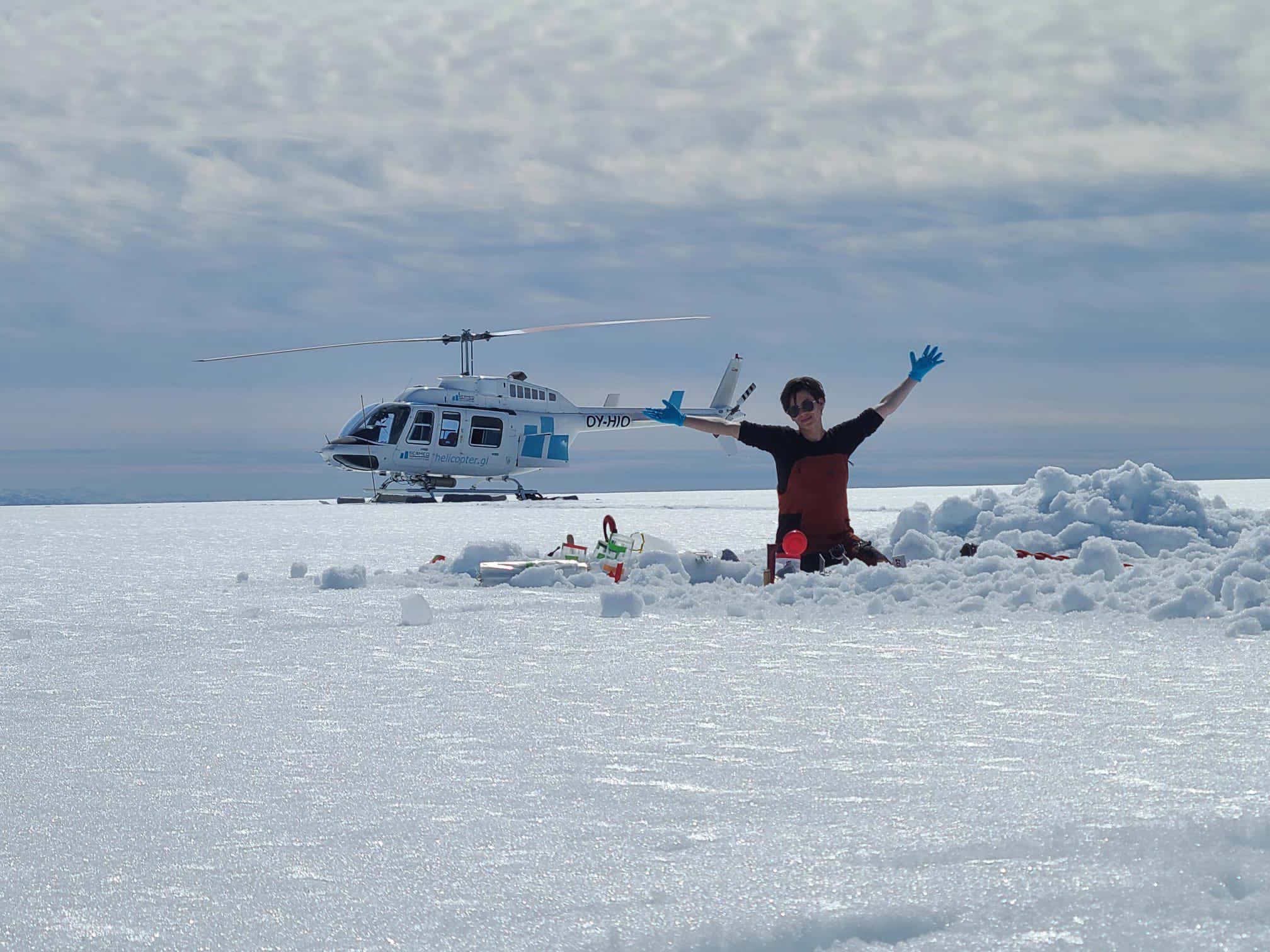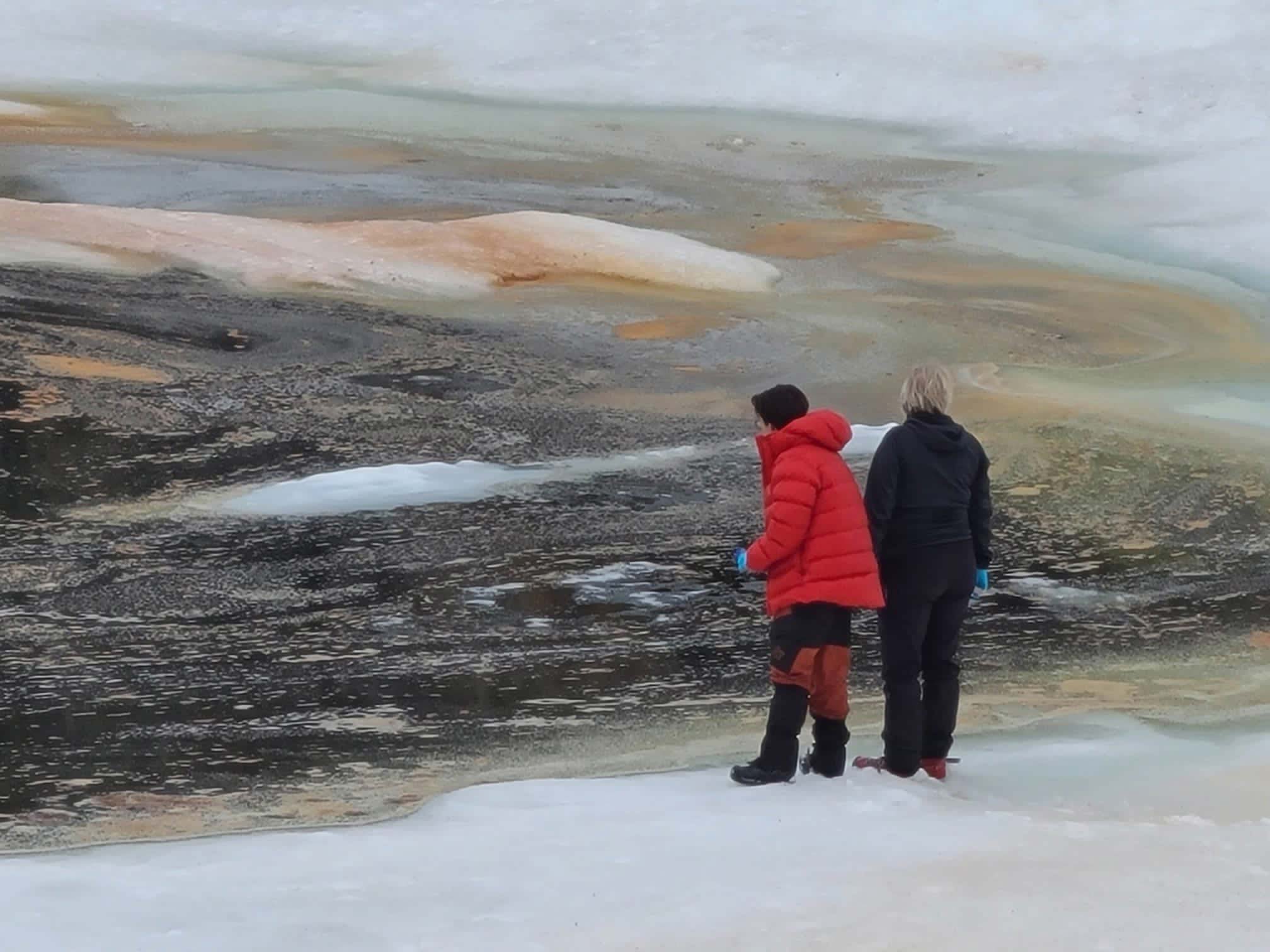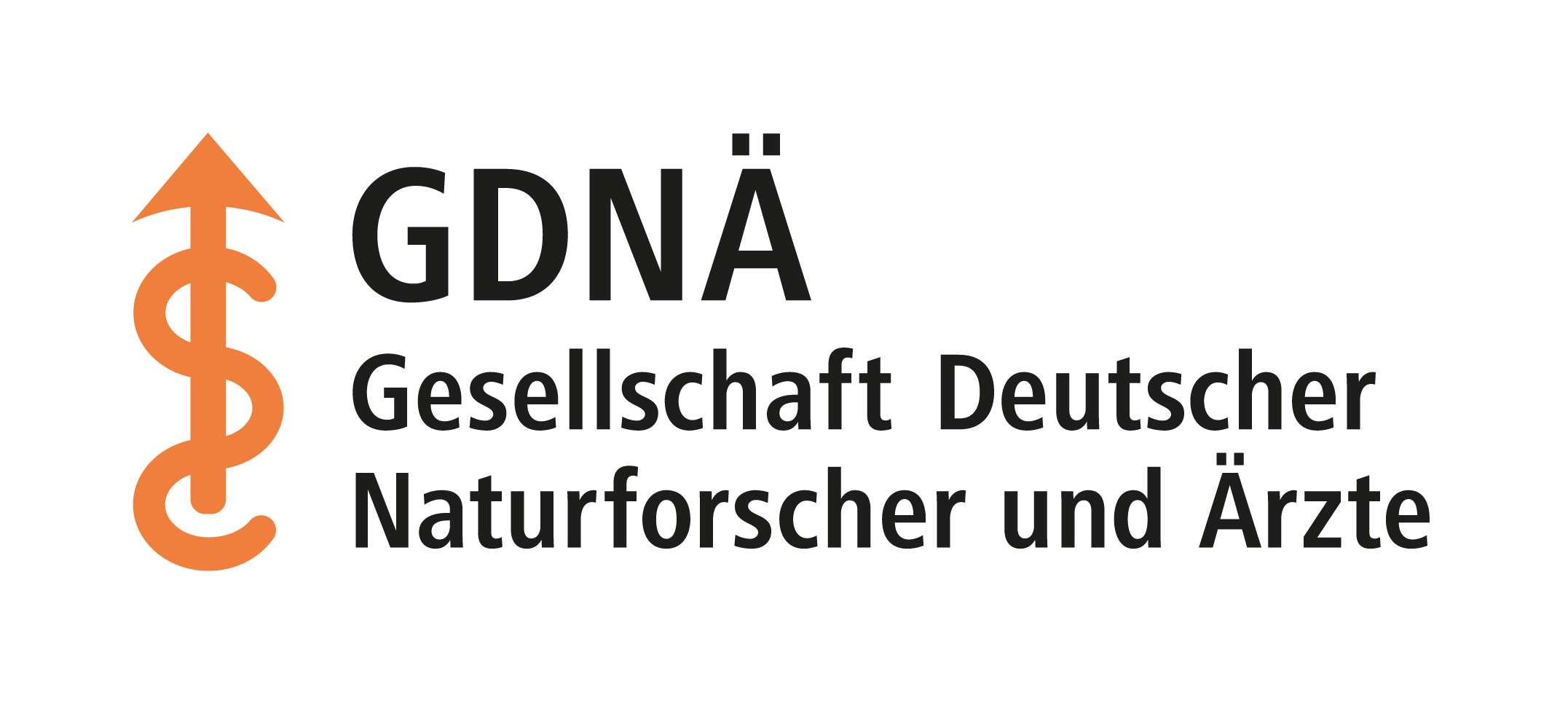How algae are fuelling climate change
Liane G. Benning, biogeochemist, on earthshaking interfaces, microbes in the Arctic ice and her El Dorado of research.
Professor Benning, at the next meeting of the GDNÄ you will be giving a public evening lecture entitled “The big melt: small cells, big consequences”. Why should people make a note of this date?
I will be presenting new, previously little-known findings that are important for future climate forecasts. For example, it will be about snow and ice algae and their major influence on the melting of the Greenland ice sheet, which contributes significantly to global sea level rise. So anyone who is interested in current climate research and wants to know what we as scientists in Potsdam and Berlin are contributing to this is cordially invited to my lecture.
You head the Interface Geochemistry research group at the GFZ Helmholtz Centre Potsdam. What do interfaces have to do with the climate?
I need to expand a little on that. My research group is concerned with interfacial reactions. This refers to chemical, physical and biological reactions on and in the surfaces of a wide variety of materials that characterise their shape, structure and function. Our planet owes its appearance, both large and small, to such processes, which control the cycle of carbon, nutrients and trace elements. Climate change is also a consequence of interfacial reactions. One example is the reactions between carbon dioxide and the atmosphere. Another, more indirect example is the chain reactions in the Arctic ice.

© Katie Sipes
Field research that’s fun: GFZ doctoral student Rey Mourot collects snow and ice samples in southern Greenland. The helicopter in the background is standing by for safety reasons. The weather can change quickly, in which case the work has to be cancelled immediately. The photo was taken in May 2022.
How do you record the processes in interfaces?
We combine experimental approaches and measurements in nature, for example in Greenland, with satellite images, microbial sequencing and high-resolution electron microscopy and spectroscopy imaging techniques that we are constantly developing. In this way, we can observe interactions in interfaces down to the atomic level. The realisation that algae, viruses and bacteria play a key role in climate processes is thanks to this large repertoire of methods.
Please explain in more detail how all this is connected.
Let’s take Greenland as an example. I’m there time and again with my team to take measurements on site and take ice samples, which we analyse when we return to Potsdam. The Greenland ice is still kilometres thick, but on average one metre melts away every year and goes into the oceans. This trend has been accelerating for years. This has to do not only with increasing global warming, but also with dark areas on the ice. They reduce the so-called albedo, i.e. the reflectivity of the surface, and heat it up. For a long time, it was thought that soot or dust particles blown onto the ice were blackening it. However, we now know that naturally occurring snow and ice algae, in combination with other microorganisms, play a significant role in the darkening – and are multiplying rapidly in Greenland. In the south-western part of the island, up to 26 per cent of the albedo reduction is due to ice algae. And as part of the major EU project “Deep Purple”, we are also investigating whether special viruses may control the algal bloom and how the bloom is slowed down by tiny fungi.
Can such findings be used to slow down climate change?
What we are doing is purely basic research. We are not involved in measures to mitigate the effects of climate change. I also believe that bioengineering or geoengineering on the basis of previous research findings is premature because we still know far too little about the overall system. Individual interventions can cause great damage, so we have to be very careful.
Is the new knowledge about algae and co. already being incorporated into climate forecasts?
In the last Intergovernmental Panel on Climate Change report from 2023, the contribution of algae was already mentioned, but bio-albedo is not yet included in the predictions. I am confident that the next assessment report will go into more detail about the effect.

© Katie Sipes
Liane G Benning and her doctoral student Rey Mourot in front of a snowfield in southern Greenland. You can clearly see how green, yellowish and red snow algae proliferate here.
You have been working in this specialised field for a long time. How did this come about?
I’ve actually always been fascinated by processes in the environment. I first studied mineralogy in Kiel and continued my studies at the ETH in Zurich, where I made geochemical reactions the subject of my doctorate. This was followed by academic posts in the USA and the UK, and over time I realised that I couldn’t make any scientific progress without biology. So I familiarised myself with the subject, especially genetics, and eventually I became a biogeochemist.
You spent 17 years at the University of Leeds before moving to Potsdam and Berlin. How did you experience the change?
Coming back to Germany was a bit of a culture shock. In everyday life, I first had to get used to the rustic manners in Berlin and Brandenburg – things are a bit more polite in England. And then there’s the excessive bureaucracy with which the Germans torment themselves and others. The British – especially at universities – often work much more efficiently, so we can learn a lot from them.
You’ve now been in the region for ten years and hopefully you’ve discovered some positive things.
A lot of positive things, in fact. Scientifically, I have fantastic opportunities here. If I need a modern, expensive measuring device for my research, I can almost always find it in the region – be it at another Helmholtz Institute, at facilities of the Max Planck Society or at the Federal Institute for Materials Testing. And, just as importantly, my colleagues are highly competent, helpful and open to co-operation. For example, the collaboration with Thomas Leya from the Fraunhofer Institute for Cell Therapy and Immunology in Potsdam is brilliant. His biobank contains a wonderful snow algae culture that is ideal for comparisons with our ice algae. We were able to benefit greatly from the expertise of our Fraunhofer colleagues when setting up our culture. All in all, I couldn’t wish for a better environment for my research.
Berlin-Brandenburg, an El Dorado for geoscientists?
I can agree with that.
Then you probably have few problems attracting good young people to your team?
When we advertise a position, we receive applications from all over the world. That was the case again just now for a junior scientist position. But we didn’t find what we were looking for, the applications simply weren’t good enough. For some it was the incomplete documents, for others it was the narrow qualifications that were not sufficient for our interdisciplinary tasks. Some applicants just want to test their chances and are not serious. So it’s not that easy for us.
How do you solve the problem?
In this specific case, we are now re-advertising the position with more precise criteria. I’m also sending the advert to colleagues I know around the world. Personal recommendations are very valuable. I also try to attract good young people from my degree programme at the FU Berlin to the GFZ: for an internship or for their final thesis. If it goes well, it can turn into a job. I also say this to the student interns from Potsdam who have been with us in recent years. My team has been great at dealing with their questions and requests and we are always happy to take on new interns from the region.

© Phil Dera
Prof. Dr. Liane G. Benning.
About the person
Liane G. Benning has headed the Interface Geochemistry Department at the Research Centre for Geosciences GFZ, Helmholtz Centre Potsdam since 2014. She is also responsible for the Potsdam Imaging and Spectral Analysis Facility (PISA). She has been a professor at Freie Universität Berlin since 2016.
Liane G. Benning completed her undergraduate degree in mineralogy at the University of Kiel and her graduate degree in petrology and geochemistry at the Swiss Federal Institute of Technology in Zurich (ETH). She received her doctorate from ETH in 1995. After a postdoctoral stay at Pennsylvania State University, Liane G. Benning moved to the University of Leeds, where she was appointed professor in 2007 and researched and taught until 2017.
The biogeochemist has received many national and international awards. She has been a member of the German National Academy of Sciences Leopoldina since 2018 and a Geochemistry Fellow of the Geochemical Society and the European Association of Geochemistry since 2020. At the beginning of 2024, Liane G. Benning was appointed to the German Council of Science and Humanities by Federal President Frank-Walter Steinmeier.

© Rey Mourot
Drill core from the Greenland ice sheet with black particles containing algae, minerals and soot. They darken the glacier surface and accelerate the melting of the ice in summer.
>> Internship enquiry for high school students: benning@gfz-potsdam.de
